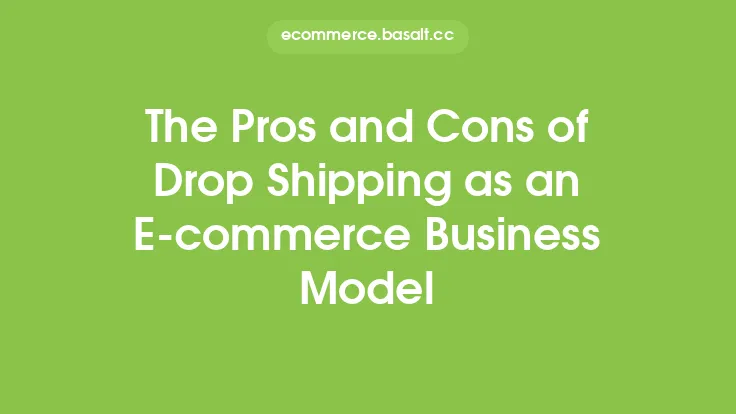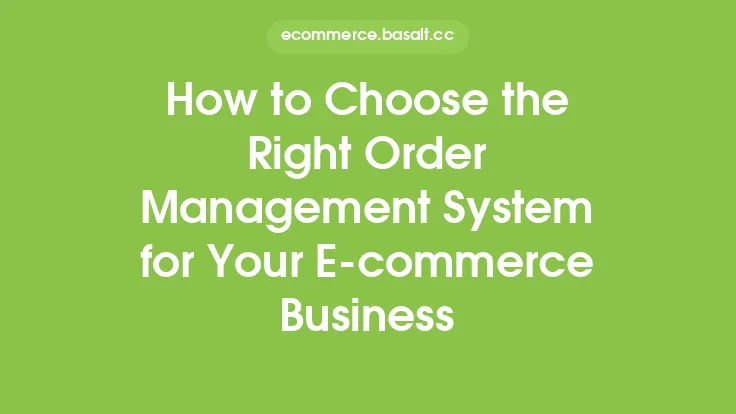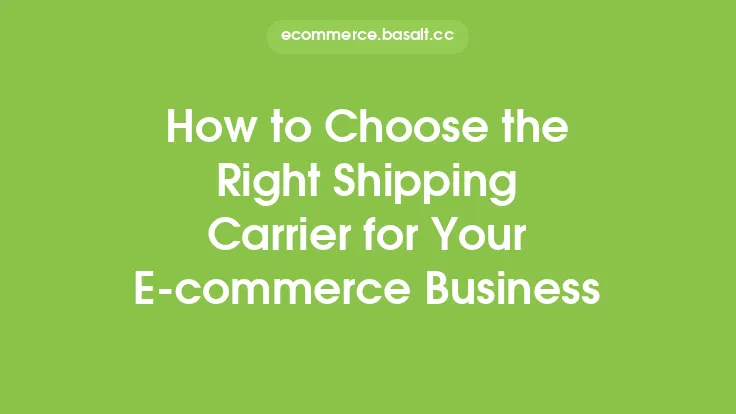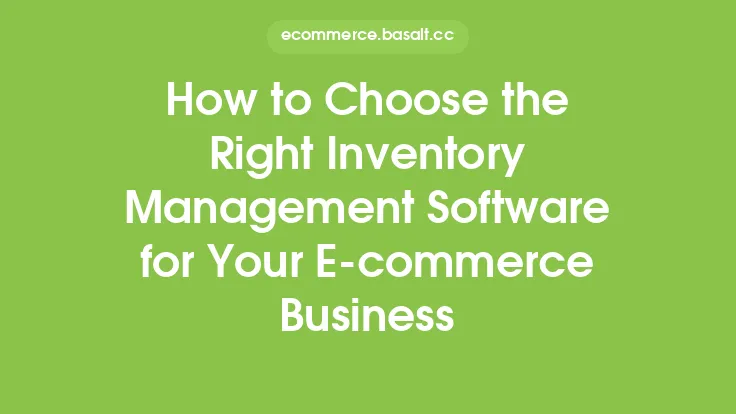As the e-commerce landscape continues to evolve, businesses are constantly looking for ways to expand their reach and increase sales. One strategy that has gained popularity in recent years is multi-channel e-commerce. This approach involves selling products through multiple online channels, such as a company's own website, social media platforms, online marketplaces, and more. While multi-channel e-commerce can offer numerous benefits, it also presents several challenges that businesses must consider. In this article, we will delve into the pros and cons of multi-channel e-commerce and help you determine if it is the right strategy for your business.
What is Multi-Channel E-commerce?
Multi-channel e-commerce refers to the practice of selling products through multiple online channels. This can include a company's own website, social media platforms, online marketplaces such as Amazon or eBay, and other e-commerce platforms. The goal of multi-channel e-commerce is to provide customers with a seamless shopping experience, regardless of the channel they use to interact with the business. By having a presence on multiple channels, businesses can increase their visibility, reach a wider audience, and ultimately drive more sales.
Benefits of Multi-Channel E-commerce
There are several benefits to using a multi-channel e-commerce strategy. One of the most significant advantages is increased visibility. By having a presence on multiple channels, businesses can reach a wider audience and increase their chances of being seen by potential customers. Multi-channel e-commerce also provides businesses with the opportunity to reach customers at different stages of the buying process. For example, a customer may first interact with a business on social media, then visit the company's website to learn more about a product, and finally make a purchase on an online marketplace.
Another benefit of multi-channel e-commerce is that it allows businesses to collect data from multiple sources. This data can be used to gain insights into customer behavior, preferences, and shopping habits, which can be used to inform marketing and sales strategies. Additionally, multi-channel e-commerce provides businesses with the opportunity to offer a seamless shopping experience across channels. This can be achieved by using a single inventory management system, providing consistent pricing and branding across channels, and offering a unified customer service experience.
Challenges of Multi-Channel E-commerce
While multi-channel e-commerce offers numerous benefits, it also presents several challenges. One of the most significant challenges is managing inventory across multiple channels. This can be complex and time-consuming, especially for businesses that sell a large number of products. To overcome this challenge, businesses can use inventory management software that allows them to track stock levels and automate inventory updates across channels.
Another challenge of multi-channel e-commerce is providing a consistent customer experience across channels. This can be difficult, especially for businesses that have a large number of customer service representatives or that use different customer service software for each channel. To overcome this challenge, businesses can use customer service software that allows them to manage customer interactions across channels from a single platform.
Key Considerations for Implementing Multi-Channel E-commerce
Before implementing a multi-channel e-commerce strategy, there are several key considerations that businesses must take into account. One of the most important considerations is the cost of implementing and maintaining a multi-channel e-commerce strategy. This can include the cost of software, hardware, and personnel, as well as the cost of marketing and advertising across multiple channels.
Another key consideration is the complexity of managing multiple channels. This can be time-consuming and require significant resources, especially for businesses that are new to e-commerce. To overcome this challenge, businesses can use software that allows them to manage multiple channels from a single platform, such as e-commerce platforms that integrate with social media and online marketplaces.
Best Practices for Multi-Channel E-commerce
To get the most out of a multi-channel e-commerce strategy, businesses must follow best practices. One of the most important best practices is to provide a consistent customer experience across channels. This can be achieved by using a single inventory management system, providing consistent pricing and branding across channels, and offering a unified customer service experience.
Another best practice is to use data and analytics to inform marketing and sales strategies. This can include tracking customer behavior and preferences across channels, as well as using data to identify trends and opportunities. By using data and analytics, businesses can optimize their multi-channel e-commerce strategy and improve their chances of success.
Conclusion
Multi-channel e-commerce is a powerful strategy that can help businesses increase sales, reach a wider audience, and provide a seamless shopping experience across channels. While it presents several challenges, such as managing inventory and providing a consistent customer experience, these can be overcome with the right software and strategies. By following best practices, such as providing a consistent customer experience and using data and analytics to inform marketing and sales strategies, businesses can get the most out of their multi-channel e-commerce strategy and achieve success in the competitive world of e-commerce. Ultimately, whether or not multi-channel e-commerce is right for your business will depend on your specific needs and goals. By carefully considering the pros and cons and key considerations, you can make an informed decision and create a multi-channel e-commerce strategy that drives sales and growth for your business.





